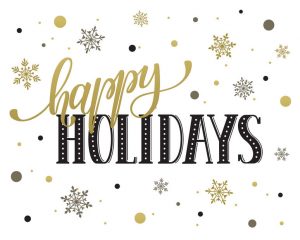 With the holidays upon us, many businesses send out seasonal emails to customers, prospects, vendors and other stakeholders. While B2C companies flood our inboxes with sales and holiday promotions, B2B holiday marketing is markedly different. This represents an ideal time to communicate your gratitude for those who have contributed to the success of your organization.
With the holidays upon us, many businesses send out seasonal emails to customers, prospects, vendors and other stakeholders. While B2C companies flood our inboxes with sales and holiday promotions, B2B holiday marketing is markedly different. This represents an ideal time to communicate your gratitude for those who have contributed to the success of your organization.
Fortunately, email is a quick and easy way to send a message to your audiences. To help you get started, we’ve put together a useful guide of do’s and don’ts for B2B holiday emails.
DO
Set goals.
Even holiday emails need goals, whether they are clicks, downloads or purchases. Think about the strategy behind each email-just like you would any other marketing campaign. This will ensure you’re not sending a holiday email just for the sake of sending one.
Keep content professional.
Although it may be tempting to adopt more informal messaging like many B2C companies do, it’s important for B2B companies to maintain a consistent tone that reinforces your brand year-round.
Get creative.
Because there is an uptick of emails sent during the holidays, you need to find a way to stand out from the crowd. While maintaining your brand identity, incorporate creativity into your email by using a clever subject line, providing a unique offer or time-sensitive discount, or communicating a way to maximize the use of your products or services during the holidays. Use color, photos and design to engage recipients.
Incorporate social.
Your audience may not check their emails during the holidays as much as they normally do. To capture their attention, make your holiday message available across all your marketing channels including social media, email and website.
Include useful information.
Including information your clients and customers will find useful is another highly effective email strategy for B2B companies. Advise clients about limited hours over the holiday season or remind them about important holiday order cutoffs.
Offer an incentive.
Gifting is a common tradition during the holiday season and it can also be used effectively in B2B email, where business relationships are especially important. Show your clients you appreciate their loyalty by offering them a gift or incentive they can use in the New Year.
DON’T
Send emails last-minute.
Most offices close or have shortened hours over the holiday period to allow their staff some well-deserved time off. Make sure to send your emails early enough to ensure they will be seen before holiday vacations.
Send the same email to everyone.
In marketing, one email rarely fits all. Take the time to segment your list and send holiday-themed emails appropriate to each group. In addition to groups such as employees, clients, prospects and vendors, consider factors such as culture and geographic region.
Feel obliged to sell.
The holiday season is highly commercialized and businesses try everything they can to boost sales during December. For a B2C company, this is usually an effective strategy because consumers are looking for gifts and special offers. Instead of selling a product or service, a more meaningful approach is to send out a simple email expressing your gratitude for your clients’ and wishing them all the best for the holidays.
Assume all customers celebrate Christmas.
It is more important than ever with for B2B companies to be aware that not all customers celebrate Christmas. For this reason, it’s much more appropriate to use neutral terms like “Happy Holidays” or “Season’s Greetings” to appeal to a wider audience.
Forget about other holidays.
There will be thousands of emails focused on Christmas, Hanukkah and the New Year. Don’t let smaller, less-celebrated holidays go to waste. Use lesser-known holidays as an opportunity to be creative and make a splash. Celebrate Gingerbread House Day (December 12), Crossword Puzzle Day (December 21), Winter Solstice (December 21) or National Trivia Day (January 4) to stand out from the crowd.
Spam your audience.
With hundreds of emails arriving in inboxes every day during the holidays, resist the urge to stray from email best practices. Keep communications focused, meaningful and relevant to your audience.
Look back (and forward)
Once you’ve sent your holiday message to your audiences, use the downtime during this traditionally quiet business period to analyze the success of your email marketing campaigns over the past 12 months. Pay particular attention to key performance indicators such as open rates, click throughs and conversions. Also take the time to evaluate your audiences. It may be time for some housekeeping with dead-end email addresses: update bounced emails, delete non-existent ones and segment groups for maximum targeting. To learn more about how to develop meaningful and impactful email campaigns, contact Trade Press Services today.
